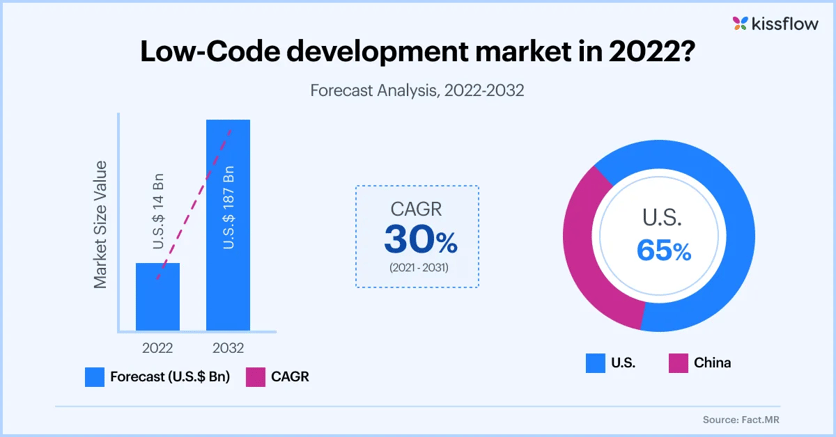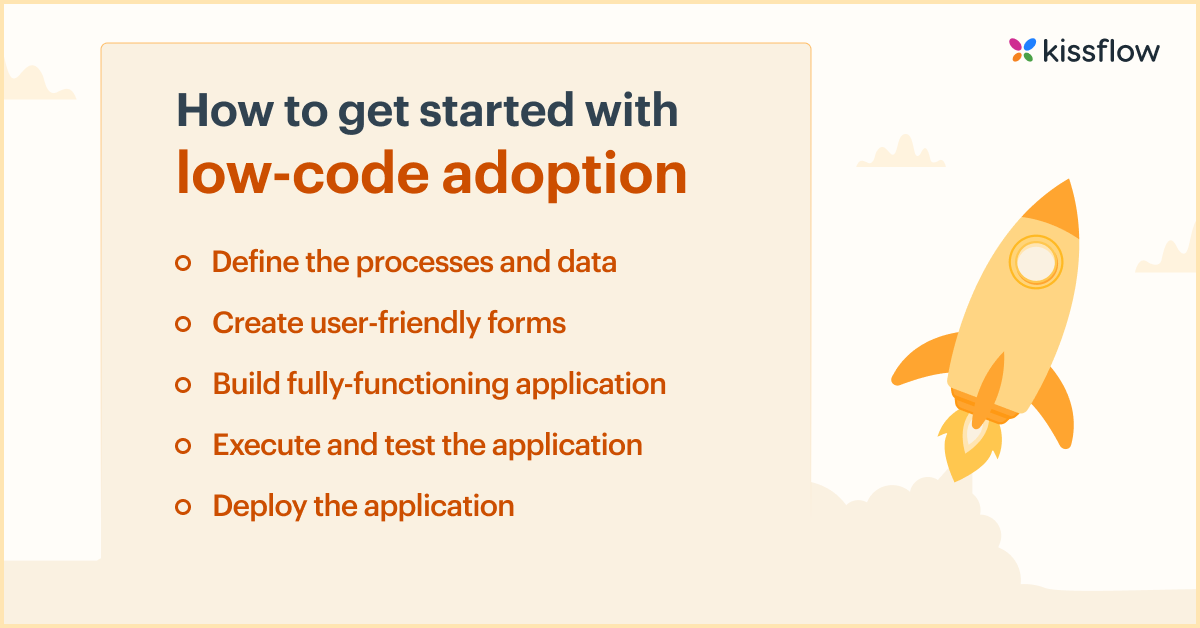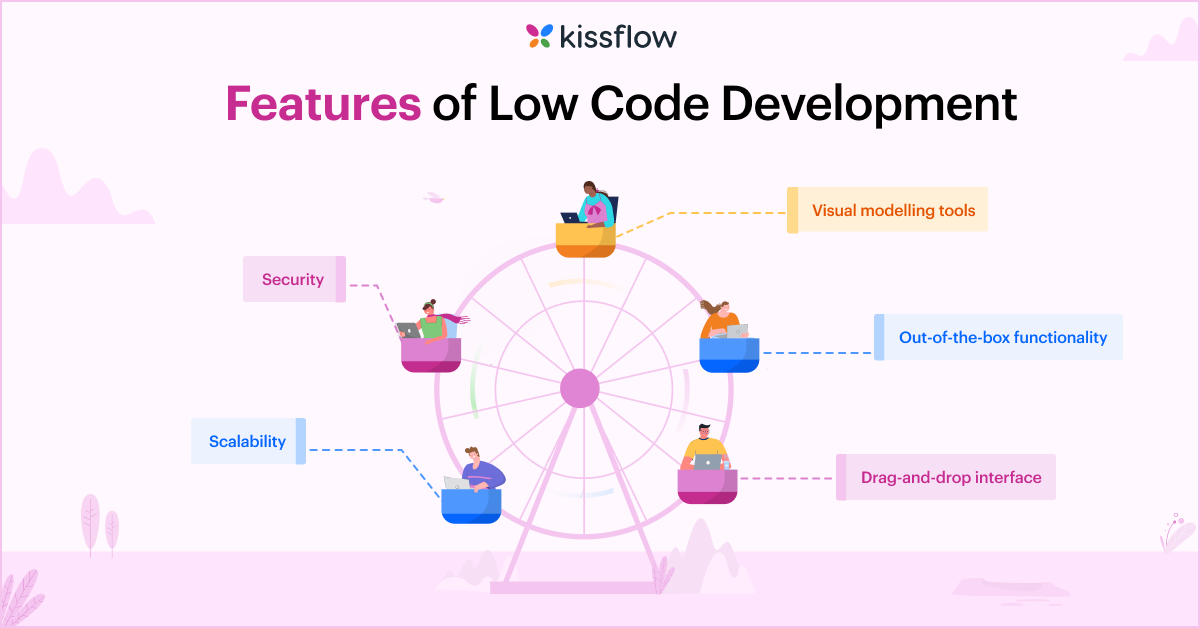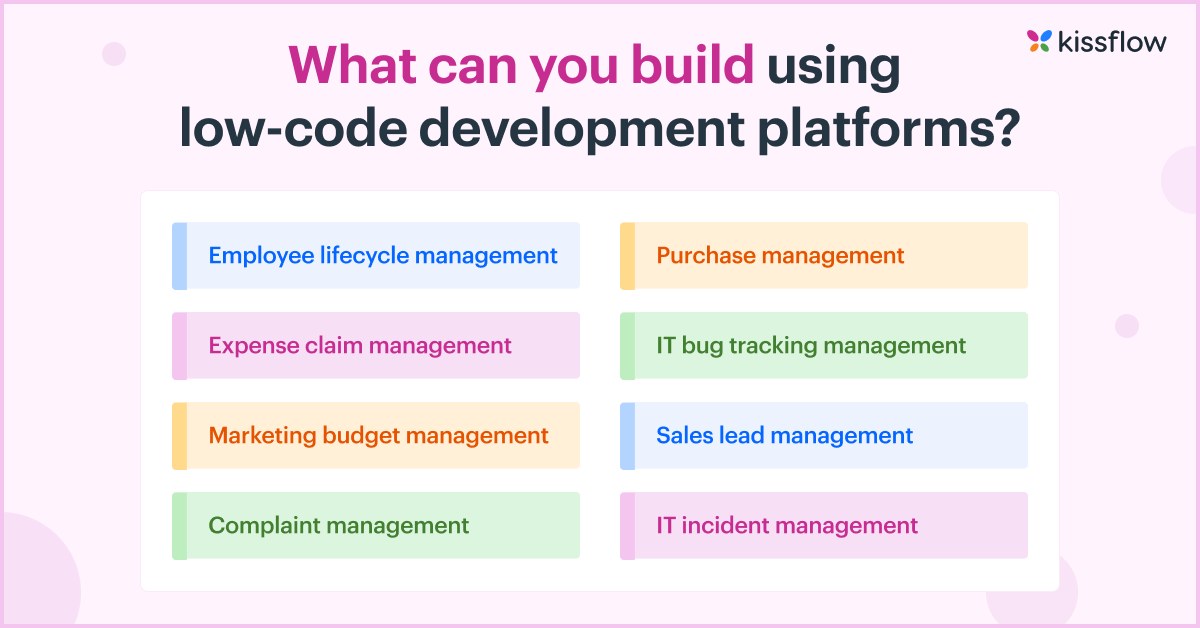Low-Code Technology - An Ultimate Guide to Low-Code Developm
Low-Code Technology - An Ultimate Guide to Low-Code Developm
In the fast-paced business and tech world, key players like CIOs and Business Technology Partners are always searching for new technologies. One technology that's making waves is low-code development. This tool enables businesses to build applications that fit their strategic goals quickly and efficiently.
This blog is a goldmine if you're a forward-thinking business leader interested in strategic innovation or an IT professional dealing with the intricacies of tech implementation. We'll delve into the basics of low-code development, its uses, and how it's changing the business world.
What is Low-Code?
Low-code is a software development approach that requires little to no coding to build applications and processes. Instead of using complex programming languages, you can employ visual interfaces with basic logic and drag-and-drop capabilities in a low-code development platform. As they are a quick and simple alternative to conventional software development, these platforms have grown in popularity.
What is Low-Code development?
Low-code platforms provide developers with a flexible and visual environment to develop simple to complex applications in a graphical interface. With advanced tools like drag-and-drop modelers, pre-built templates, intuitive UI, etc, low-code platforms allow developers to design and deploy apps much faster, allowing organizations to scale, be more profitable, and achieve above-average returns.
Instead of conventional hand-coded computer programming, a low-code development framework offers a programming environment for creating software applications via graphical user interfaces and configuration.
"Low-code and no-code tools are a way to mitigate talent shortages because they allow companies to build software systems without the need for large teams of developers," says Amitha Pulijala, vice president of product, cloud platform services, CX, API, and AI at Vonage.
Low-code creation frameworks provide IT customers the ability to incorporate building blocks into workflows and apps. These basic elements abstract away the code behind actions and orders, allowing IT to create interfaces and business applications without having to code them by hand.
Who are the Low-Code Developers?
Users with no advanced knowledge of coding or software creation may use these intuitive techniques to build software for several purposes, such as creating mobile and business applications. A low-code framework can be used by technical and citizen developers (non-professional development) to build applications of a wide variety to fulfill market demands for growth, simplify processes, and facilitate digital transformation.
Experience the power of low-code with the simplicity of no-code.
Get Started
What Is the Future of Low-Code Development (in 2023 & Beyond)?
The growth of low-code as a general social and technical phenomenon is anticipated to expand.
- According to Gartner, Inc’s latest report, the global market for low-code development technologies is expected to be $26.9 billion in 2023 (an increase of 19.6 percent from 2022).
- The low-code global market is expected to be around $65 billion by 2027 and $187 billion by 2030. That’s a CAGR of 31.1 percent between 2020-2030.
- Low Code Application Platforms (LCAP) are predicted to remain the largest part of the low-code development technology market in 2023. for example, it has already increased by 30 percent since 2020 and generated $5.8 billion in 2022.

Benefits of a low-code development to business owners
Low-code implementation will quickly yield observable results for business owners. Here are some of the most significant advantages:
Increased agility:
Helps create and deploy new apps quickly and easily without extensive programming knowledge. This can help organizations become more agile and responsive to changing business needs.
Reduced costs:
Reduces the need for specialized programming resources, which can help to lower development costs. Low-code can also help automate repetitive tasks and can further reduce costs.
Better user experience: Allows business owners to create apps tailored to their users' specific needs, resulting in a better user experience.
Faster time to market:
Speeds up the app development process and helps organizations to get new products and services to market faster.
Improved decision-making:
By having access to real-time data and insights, business owners can make better, data-driven decisions that can improve overall business performance.
Access to new technologies:
Low-code platforms often come with a wide range of pre-built templates and features, which can help business owners quickly and easily integrate new technologies such as artificial intelligence, machine learning, and more.
How to get started with low-code adoption

Define the processes and data
The underlying elements of any application are process data. Start by defining the processes in line with business needs to get a structured flow. This helps create apps in such a way that the processes are in the right order, and easier to achieve the result. You can also find the most effective path by implementing process simulation and deriving new insights. Once you have a set of defined processes, collecting the right and necessary data becomes more effortless.. Determine the data required to carry out the processes seamlessly from start to end.
Create user-friendly forms
Low-code adoption becomes easier if the user experience is seamless and good. Based on the defined process and data and with drag-and-drop features, intuitive forms can be created to collect relevant information. A robust low-code platform enables users to build forms dynamically with user-based control and ready-to-use widgets. Creating the perfect form with any field type and functionality helps build apps better.
Build fully-functioning application
Building apps using low-code functionalities is a cakewalk, requiring minimal training and coding knowledge. The solution follows a visual app-building approach that empowers anyone to build simple to complex apps without employing developers. You also can modify the default code to unlock more advanced features in the app. One of the most significant advantages of a low-code platform is business-process automation. With pre-built templates and visual-development features, you can automate repetitive tasks that do not require human intervention. This saves employees' time and effort which can better be put into business-critical tasks.
Execute and test the application
Testing the application is a mandatory step before launching it. This way, any sort of technical issues and glitches can be identified before the application goes live. A faulty application can adversely affect the efficiency and performance of processes. Low-code platforms provide a testing environment where the built application can be scrutinized and tested multiple times to check its performance and eliminate technical faults. Based on the test results and user feedback, necessary changes can be made before the app is pushed to the live stage.
Deploy the application
Low-code platforms offer flexible application deployment. You can install, configure, and set up fully functional applications with just a few clicks. Along with the deployment, low-code platforms provide real-time feature updates, fixes, and updates.
Low-code adoption challenges
Although low-code can offer many benefits, there are also some challenges that organizations should be aware of when implementing this approach.
One of the main challenges of low-code technology is that it can be difficult for non-technical users to understand and navigate the platform. This can make it difficult for business analysts and domain experts to create and test their own apps and make it harder for IT departments to support and maintain those apps.
Another challenge is that low-code solutions can be limiting when it comes to customization and scalability. While the drag-and-drop interface can be intuitive and easy to use, it may not offer the same level of flexibility as traditional coding methods. This can make it challenging to create complex or custom apps that meet an organisation's specific needs.
Features of Low-Code Development

1. Visual Modeling Tools
It takes less time to create apps using visual approaches and templates than to develop apps using code. Low-code systems, which are equipped with visual modeling features, use built-in modules to reflect the details in a way that everyone may understand – from non-technical enterprise users to advanced developers.
2. Out-of-the-Box Functionality
OOTB (out-of-the-box) software is provided by leading low-code platforms, which removes the need to create key components for applications from the start. Some low code systems, for example, provide data storage or customer-facing app components, such as service management or sales process management.
3. Drag-and-Drop Interface
Drag-and-drop functionality is available on any well-known low code platform. It is one of the most critical and valuable functionalities that facilitates the production process. The convenience drag-and-drop features offer throughout the development of apps support both citizen developers and technical developers.
4. Security
A low-code tool that isn’t safe isn’t a sufficient solution, no matter how usable or user-friendly it is. Before you start using your low-code development framework, make sure it has enough protection to secure the applications you’re creating and the platform as a whole.
5. Scalability
Scalability is essential for low-code systems. It should create applications that can accommodate a rise in users as your company will expand. It should be able to accommodate twenty as well as twenty thousand employees.
Experience the power of low-code with the simplicity of no-code.
Get Started
What Can You Build Using Low-Code Development?
As organizations exponentially grow, they tend to adopt new technologies to ensure operational efficiency. Low-code is one such robust technology that enables organizations to be digitally progressive. With low-code platforms, you can create flexible solutions such as automating processes, digitizing your operations, managing requests, and building custom applications at speed and scale.
Low-Code Use Cases:
- Employee lifecycle management
- Purchase management
- Expense claim management
- Complaint management
- Marketing budget management
- Sales lead management
- IT bug tracking management
- IT incident management

Experience the power of low-code with the simplicity of no-code.
Get Started
Low-Code Related Frequently Asked Questions
What Does Low-Code Mean?
Low-code is a software development technique that enables IT developers to build applications with minimal coding. While applications built using traditional methods can take up to six months, low-code applications can take anywhere from a few hours to a few days to be built depending on the low-code development platform used.
Low-Code Examples
The classic example of a low-code platform is to help citizen developers build simple applications, such as a business analytics dashboard. But low-code development technology can help professional developers be more efficient with larger tasks.
Kissflow Work Platform is a good example of low-code development use cases. It allows both IT developers and business leaders to collaborate and co-develop applications with its widget-rich UI by just dragging and dropping components.
Is Low-Code the Future?
With leaders like Gartner predicting that about 50% of enterprises will adopt low-code for app-development by 2023 to build about 450 million apps by investing $21.2 billion, low-code is undoubtedly the stepping stone to innovate faster and better.
How Can I Learn Low-Code?
To be a low-code developer, you don’t have to be a top-notch developer. All you need to have is a basic understanding of coding. This will help you customize your app besides dragging and dropping the readily available templates.
What Is the Difference Between Low-Code and Low-Coder?
Low-code is the technology that allows organizations to build custom applications with minimal to zero coding efforts. While low-coders are citizen developers who have a basic understanding of coding and can apply business logic to build custom apps on their own using low-code development platforms.
What Are Low-Code Databases?
Low-code database solutions allow you to create your own databases, add or remove data, modify fields, and keep track of all your data, all without having to learn a query language.
It works in the same principle as low-code development platforms. You can visually create databases as you would low-code apps. Instead of learning query commands and scripts, the functions you need are already programmed into low-code solutions.
This saves you from having to employ an entire team for database management. Buying low-code databases are much less expensive than having to constantly have a team on staff.
Related Articles
What is Low-Code? A Complete Guide to Low-Code Development
Low-code is a software development approach that requires little to no coding ... LOW CODE - 3 MINUTES READ
LOW CODE - 3 MINUTES READ
Best Low-Code Platforms in the Market 2022
A key features that can help you pick out the best low-code platforms.






































































